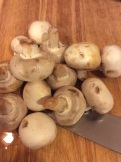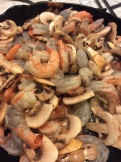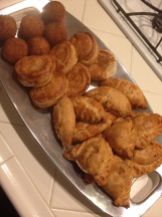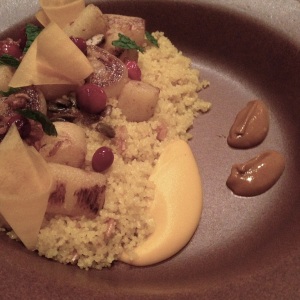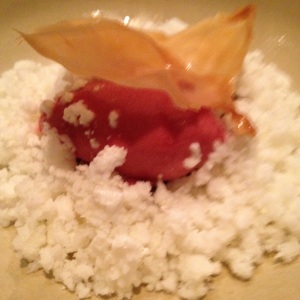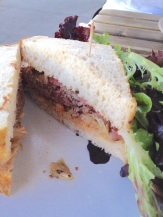For a family outing, we decided to visit downtown LA. “Why,” you might ask. “There’s nothing there.” But you would be wrong. The downtown is being revitalized, and it has long been home to the LA flower market, two huge warehouses filled with flower merchants offering all sorts of cut flowers, plants, and vases and pots to hold them. It’s not the Chelsea Flower Show, but it is a pretty interesting place. In addition, the Grand Central Market has recently been redone. It has been open since the early twentieth century, but it had fallen on hard times. Now it has become more upscale, but it still has the feel of a Mexican mercado. Peter, our son, joined us for a couple of days from Silicon Valley, so he was in our group.
To get to the flower market, you have to pass through the garment district where bolts of cloth are displayed at store fronts. I though I was back in El Paso. For the flower market, you park on the roof top of one of the warehouses, ride the elevator down to the showroom floor, and pay an entrance fee of $1. Then you wander the aisles between displays of hydrangeas in many colors (dyed of course), bromeliads, cacti, roses, daisies, and this time of year, poinsettias being pulled from the shelves. Prices are remarkably low, so it is easy to fill your arms with bunches of flowers wrapped in old Korean-language newspapers.
The street between the two warehouses is filled with food vendors, and you can get pastries, humus, french fries, elotes (corn on the cob), and any number of sandwiches. But we were saving our appetites for the Grand Central Market.
We drove a few blocks, parked in the garage, and rode the elevator down to the market. It was an overwhelming sight. There were crowds of people, neon signs advertising various vendors, and stalls filled with the special offerings of every vendor.
Among the items we wound up buying was a huge bacalao that I got to make for a New Year’s Day dinner (along with black-eyed peas and cabbage, of course). There was an abundance of fruits and vegetables, but no yuca which Peter was looking for to make his Colombian sancocho later in the day.
Surprisingly, there was an oyster bar with a good selection of raw oysters and wine, so some of us paused there. Others chose Thai, Chinese, or barbecue. We passed up the Eggslut (Don’t ask me how it got the name) because the line was way too long. The place is one of the best known vendors in the market and offers eggs done in a myriad of ways.
Peter opted for a Mexican stand that was selling tacos and tortas. You could choose any number of fillings – chicharon, tripitas, tripe. For most of them, there was an English translation for what it was. Some did not have a translation. One of those was buche. This is considered a great delicacy, but for all my years in El Paso, I could never get anyone to tell me what it was.
Years ago, I had a waitress in a Mexican restaurant tell me that if I had to ask what a dish was, I probably didn’t want o order it. Those are words to live by.
Anyway, Peter ordered the buche sandwich even though the server seemed amazed and double checked that that was what he wanted. Peter got the sandwich, took one bite, swallowed, and then googled to learn that buche is pig esophagus. He put down the sandwich and headed straight to the barbecue stand.

























